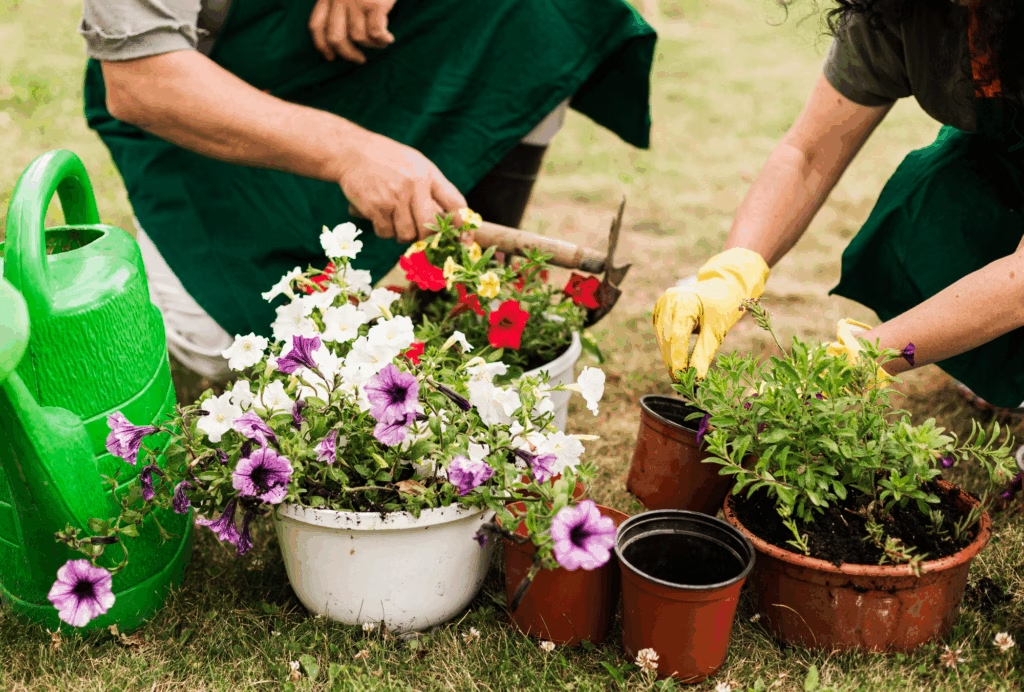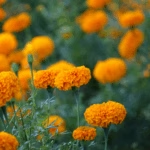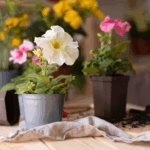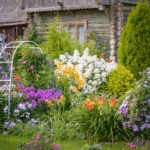Introduction
Spring and summer are the perfect seasons to fill your garden with vibrant, colorful flowers. However, not everyone has the time or energy for high-maintenance gardening. With the right strategies, you can create a stunning garden that requires minimal effort while still providing beauty and fragrance.

This guide explores low-maintenance flower gardening techniques for spring and summer. From plant selection and soil preparation to watering hacks and seasonal care, these tips help you maintain a colorful garden with less work.
1. Choose Low-Maintenance Flower Varieties
Selecting the right flowers is key to a low-maintenance garden. Opt for plants that are hardy, drought-tolerant, and require minimal pruning.
Recommended varieties for spring and summer:
- Marigolds: Bright, pest-resistant, and bloom all season.
- Zinnias: Easy to grow, drought-tolerant, and available in multiple colors.
- Petunias: Thrives in containers and garden beds with minimal care.
- Coneflowers (Echinacea): Hardy perennials that attract pollinators.
- Lavender: Fragrant, drought-resistant, and low-maintenance.
Tip: Mix perennials and annuals for continuous blooms with minimal replanting.
2. Plan Your Garden Layout
A well-planned layout reduces maintenance and maximizes visual appeal.
- Group plants with similar water and sunlight needs together.
- Use mulch beds to reduce weeding and retain soil moisture.
- Place taller plants at the back of beds and shorter varieties in front for visibility.
Hack: Plant in drifts or clusters for a natural, full look without constant rearranging.
3. Use Quality Soil and Mulch
Healthy soil minimizes the need for constant fertilization and watering.
- Mix in compost or organic matter to improve nutrient content and drainage.
- Apply 2–3 inches of mulch around plants to retain moisture, suppress weeds, and regulate temperature.
Mulching also reduces the frequency of watering and helps your flowers thrive with minimal intervention.
4. Low-Maintenance Flowering Shrubs
Shrubs can provide structure, blooms, and color without frequent upkeep.
- Hydrangeas: Bloom repeatedly with minimal care; prune only after flowering.
- Roses (shrub varieties): Disease-resistant, drought-tolerant, and low-maintenance if properly spaced.
- Dwarf butterfly bush: Hardy, attracts pollinators, and requires little pruning.
Tip: Use shrubs as a backdrop to annuals and perennials to reduce constant planting.
5. Container Flower Gardening
Containers and pots are excellent for low-maintenance gardening.
- Use self-watering pots to reduce watering frequency.
- Plant drought-tolerant species like petunias, lantanas, or succulents.
- Group containers together to create focal points without intensive landscaping.
Related: Explore more ideas in our container gardening guide.
6. Perennials vs. Annuals
Choosing between perennials and annuals affects long-term maintenance:
- Perennials like coneflowers, daylilies, and lavender return every year, reducing replanting effort.
- Annuals like zinnias and marigolds bloom profusely in one season and can be rotated for variety.
Hack: Mix perennials with annuals for a low-maintenance garden that offers seasonal color changes.
7. Efficient Watering Techniques
Proper watering is critical for a low-maintenance garden.
- Use drip irrigation systems to deliver water directly to the roots.
- Water early in the morning to reduce evaporation and fungal problems.
- Mulch beds to retain moisture and reduce watering frequency.
Tip: Drought-tolerant flowers reduce overall water needs.
8. Fertilizing for Minimal Maintenance
Low-maintenance flowers still need nutrients for vibrant blooms.
- Use slow-release granular fertilizers to provide nutrients for several weeks.
- Compost and organic fertilizers improve soil health naturally.
- Fertilize in early spring and mid-summer to encourage continuous flowering.
9. Pest and Disease Management
Preventing problems is easier than constant treatment:
- Plant pest-resistant flowers like marigolds, lavender, and zinnias.
- Encourage beneficial insects like ladybugs and lacewings.
- Remove diseased leaves promptly to prevent spread.
- Avoid overhead watering to reduce fungal issues.
Related: See our organic gardening tips for safe pest management.
10. Easy Pruning and Deadheading
Deadheading (removing spent flowers) encourages new blooms but does not need to be frequent.
- Focus on perennials like coneflowers and daylilies once a month.
- Prune lightly to maintain shape and remove damaged stems.
- Avoid over-pruning; let flowers maintain natural growth to reduce maintenance.
11. Companion Planting for Low Maintenance
Strategic companion planting reduces pests and improves growth naturally.
- Plant marigolds with roses or vegetables to deter aphids.
- Lavender near other flowers attracts pollinators and repels pests.
- Nasturtiums can protect other plants by acting as a trap crop.
12. Seasonal Flowering Strategies
Plan for continuous blooms throughout spring and summer:
- Early Spring: Tulips, daffodils, pansies
- Late Spring: Marigolds, petunias, geraniums
- Summer: Zinnias, coneflowers, lantanas
- Late Summer: Cosmos, rudbeckia, butterfly bush
Hack: Plant staggered groups to ensure one section always blooms while another is in growth.
13. Low-Maintenance Ground Covers
Ground covers reduce weeds and add color without constant upkeep.
- Creeping thyme – drought-tolerant, fragrant, and blooms in summer.
- Sedum – thrives in poor soil and requires minimal watering.
- Ajuga – fast-spreading with colorful foliage and flowers.
Ground covers also prevent soil erosion and maintain moisture.
14. Indoor Flower Gardening
Even apartments or shaded gardens can enjoy flowers indoors:
- African violets – bloom year-round in low-light conditions.
- Peace lilies – low-maintenance and air-purifying.
- Orchids – require minimal watering and bright indirect light.
Indoor flowers add beauty with very little effort, making them ideal for busy gardeners.
15. Smart Garden Layout and Accessibility
A well-organized garden minimizes maintenance:
- Group plants by sunlight and water needs.
- Create easy access paths to prevent trampling.
- Use raised beds or containers to reduce bending and back strain.
This planning ensures minimal effort while maintaining a vibrant and productive flower garden.
Conclusion
Low-maintenance flower gardening for spring and summer is achievable with careful planning and smart plant selection. By choosing hardy, drought-tolerant varieties, using quality soil and mulch, and adopting efficient watering and fertilizing practices, you can enjoy a colorful garden with minimal effort.
Gardening does not need to be labor-intensive. With these low-maintenance techniques, you can focus on enjoying the beauty, fragrance, and relaxation that flowers bring to your home and outdoor space.
Call to Action: Ready to create your low-maintenance spring and summer garden? Visit Agzora.com for expert gardening tips, seasonal seeds, and eco-friendly tools designed to simplify your gardening experience.





